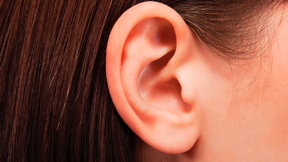Home > Press > New nano-gel to protect children receiving chemotherapy from hearing loss
 |
Abstract:
Curtin University researchers will test a new nano-gel they have created to protect children receiving chemotherapy treatment from the common side effect of hearing loss, as part of a new project with Ear Science Institute Australia and supported by funding from the Channel 7 Telethon Trust.
New nano-gel to protect children receiving chemotherapy from hearing loss
Bentley, Australia | Posted on June 17th, 2022
Lead researcher Associate Professor Hani Al-Salami, from the Curtin Health Innovation Research Institute (CHIRI) based at Curtin University, said 90 per cent of children survive cancer but about half will have some degree of permanent hearing due to toxic effects of chemotherapy drugs.
There is currently no proven prevention or cure for this hearing loss, so this new research will test the effectiveness of a nano-gel that is injected into the ear before chemotherapy to prevent the possible side effect of cancer treatment among children, Associate Professor Al-Salami said.
The bile acid-based nano-gel has been developed at Curtin by a group of clinicians, pharmaceutical scientists, ENT (ear, nose and throat) surgeons, cochlea physiologists and synthetic chemists using cutting-edge technologies.
Human bile extract is put through specialised systems to produce a gel, which is capable of being injected into the human ear and can potentially protect children from the side effects of chemotherapy, which targets and destroys cancer tissues and can also kill other healthy tissues resulting in problems including hearing loss.
Ear Science Institute Australia CEO Sandra Bellekom said it was a very exciting time for ear and hearing medical research in Western Australia.
The Telethon grant will allow Ear Science to further develop an established and proven nano-gel, improving efficacy and making it safer for use in our children, Ms Bellekom said.
Associate Professor Al-Salami is involved in several other new projects also funded by Telethon and led by scientists at Ear Science Institute Australia and Lions Eye Institute, to develop an inner ear cell culture system that will benefit children with Usher syndrome, a scaffold to repair perforated eardrums in children and new systems for eye drug and gene delivery.
The Channel 7 Telethon Trusts support of Ear Science Institute Australia also includes funding for the procurement of a newly developed scanning electron microscope for use in the research, which is capable of micro and nano scale visualisation of critical features of the nano-gel.
Funding for the projects was announced as part of Telethons list of beneficiaries for 2022.
####
For more information, please click here
Contacts:
Lucien Wilkinson
Curtin University
Office: 0401103683
Copyright © Curtin University
If you have a comment, please Contact us.
Issuers of news releases, not 7th Wave, Inc. or Nanotechnology Now, are solely responsible for the accuracy of the content.
News and information
![]()
Solving the puzzle of 2D disorder: An interdisciplinary team developed a new method to characterize disorder in 2D materials June 17th, 2022
![]()
Photonic integrated erbium doped amplifiers reach commercial performance: Boosting light power revolutionizes communications and autopilots June 17th, 2022
![]()
OCSiAl expands its graphene nanotube production capacities to Europe June 17th, 2022
Cancer
![]()
Electron-phonon coupling assisted universal red luminescence of o-phenylenediamine-based CDs June 10th, 2022
![]()
Emerging vaccine nanotechnology June 3rd, 2022
![]()
Diabetes drug improves antibacterial treatment speed and effectiveness, researchers report May 27th, 2022
Possible Futures
![]()
Scientists offer solutions for risky tap water June 17th, 2022
![]()
Solving the puzzle of 2D disorder: An interdisciplinary team developed a new method to characterize disorder in 2D materials June 17th, 2022
![]()
Photonic integrated erbium doped amplifiers reach commercial performance: Boosting light power revolutionizes communications and autopilots June 17th, 2022
![]()
OCSiAl expands its graphene nanotube production capacities to Europe June 17th, 2022
Nanomedicine
![]()
Electron-phonon coupling assisted universal red luminescence of o-phenylenediamine-based CDs June 10th, 2022
![]()
Small materials may be key to reducing cardiovascular disease deaths, researchers say June 10th, 2022
![]()
Decoding a key part of the cell, atom by atom June 10th, 2022
Discoveries
![]()
Scientists offer solutions for risky tap water June 17th, 2022
![]()
Solving the puzzle of 2D disorder: An interdisciplinary team developed a new method to characterize disorder in 2D materials June 17th, 2022
![]()
UBCO researchers change the game when it comes to activity tracking: Flexible, highly sensitive motion device created by extrusion printing June 17th, 2022
Announcements
![]()
UBCO researchers change the game when it comes to activity tracking: Flexible, highly sensitive motion device created by extrusion printing June 17th, 2022
![]()
Photonic integrated erbium doped amplifiers reach commercial performance: Boosting light power revolutionizes communications and autopilots June 17th, 2022
![]()
OCSiAl expands its graphene nanotube production capacities to Europe June 17th, 2022
Grants/Sponsored Research/Awards/Scholarships/Gifts/Contests/Honors/Records
![]()
UBCO researchers change the game when it comes to activity tracking: Flexible, highly sensitive motion device created by extrusion printing June 17th, 2022
![]()
Nanostructured fibers can impersonate human muscles June 3rd, 2022
![]()
Bacteria-killing drills get an upgrade Visible light triggers: Rices molecular machines to treat infections June 1st, 2022
![]()
A new step in the search for room-temperature superconductors May 27th, 2022
Nanobiotechnology
![]()
Decoding a key part of the cell, atom by atom June 10th, 2022










